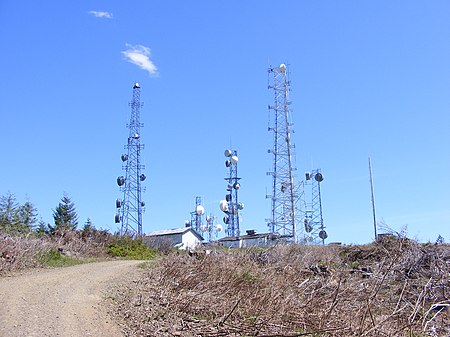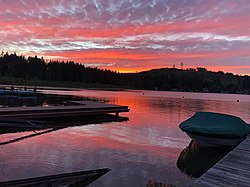Capitol Peak (Thurston County)
Mountains of Thurston County, WashingtonMountains of Washington (state)Thurston County, Washington geography stubs

Capitol Peak is a 2,658-foot (810 m) peak in the Black Hills in the U.S. state of Washington. It is one of the two highest peaks in the Black Hills, along with Larch Mountain. Capitol Peak is located in the Capitol State Forest. There is a partially paved road to the summit called the Sherman Valley Road. The summit hosts a communications facility that includes an array of cell phone and radio towers. On a clear day, looking to the west is a view of Elma and the Satsop Nuclear Power Plant. Looking to the east is a view of Mount Rainier, Mount St. Helens, and Mount Adams; more to the north are the Puget Sound, and the Olympia area.: 80
Excerpt from the Wikipedia article Capitol Peak (Thurston County) (License: CC BY-SA 3.0, Authors, Images).Capitol Peak (Thurston County)
C-4300,
Geographical coordinates (GPS) Address Nearby Places Show on map
Geographical coordinates (GPS)
| Latitude | Longitude |
|---|---|
| N 46.97273885 ° | E -123.138875111 ° |
Address
C-4300
C-4300
Washington, United States
Open on Google Maps


